Almost every U.S. state has designated either an official state dinosaur and/or state fossil symbol. Only five states have none, although other states have more than one. Washington, D.C. also has one! Read on for the complete list of state dinosaurs and other fossils with both photos and facts about each.
Alabama: Basilosaurus cetoides (State Fossil)

was a large predatory whale.
©
Alabama named Basilosaurus cetoides its official state fossil in 1984. This archaeocete whale dates to the Eocene. Researchers named the type species from fossils first found in Louisiana in the early 19th century; however, more fossils from Alabama were found soon thereafter.
Alaska: Woolly Mammoth Mammuthus primigenius (State Fossil)
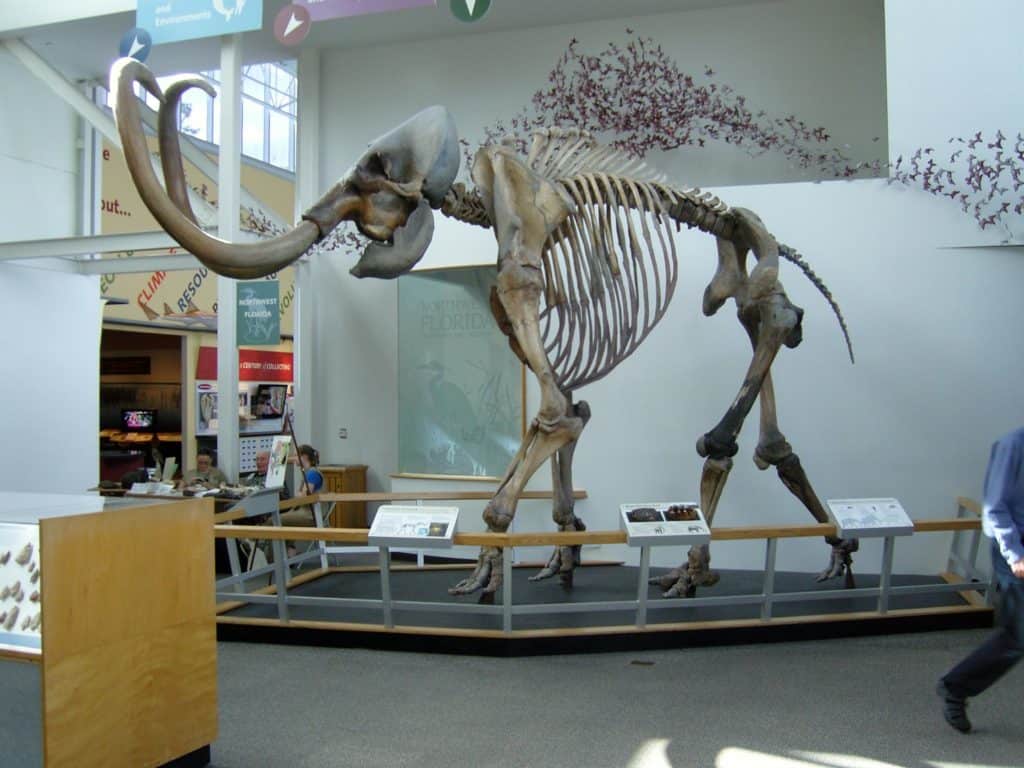
The woolly mammoth co-existed with Paleoindians.
Alaska named the woolly mammoth (Mammuthus primigenius) its official state fossil in 1986. This mammoth species dates to between the Middle Pleistocene and Late Holocene. Alaska is a source of many fossils, including well-preserved specimens in permafrost.
Arizona: Sonorasaurus thompsoni (State Dinosaur)
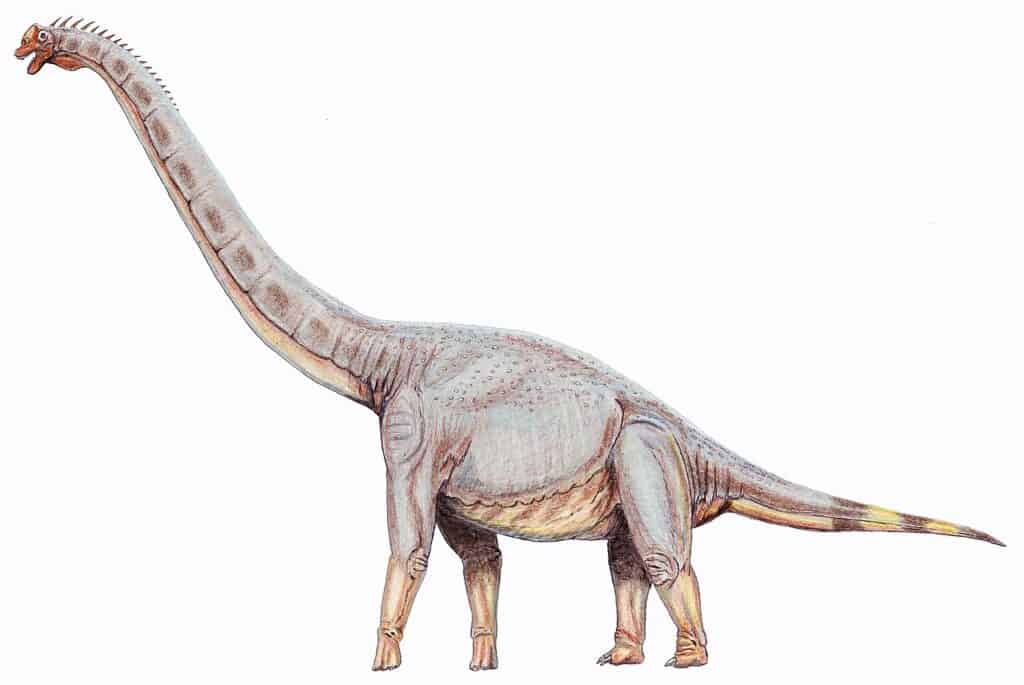
was a quadruped herbivore.
©Creator:Dmitry Bogdanov / CC BY 3.0 - License
Arizona named Sonorasaurus thompsoni its official state dinosaur in 2018. It was a brachiosaur from the Early to Late Cretaceous. Researchers named the type species from fossils found in the state’s Turney Ranch Formation in the Sonoran Desert.
Arizona: Petrified Wood of Araucarioxylon arizonicum (State Fossil)
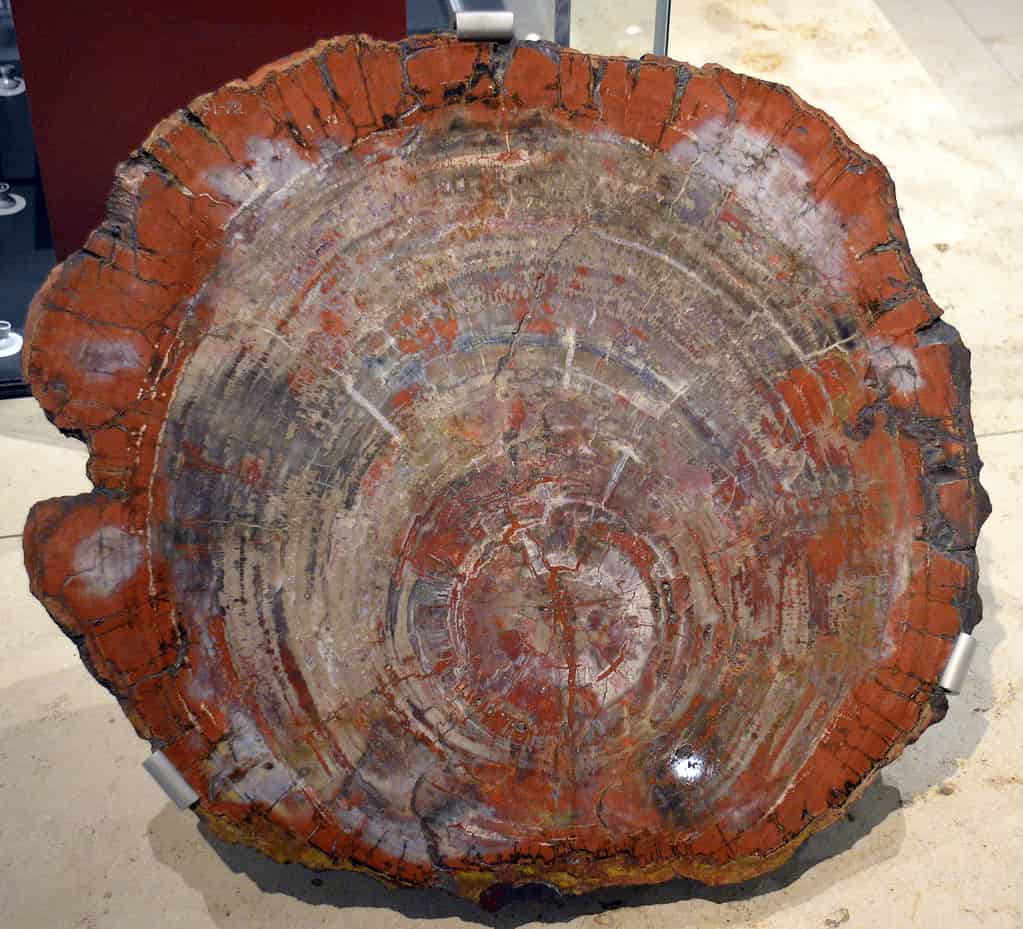
Petrified wood is a type of fossil in which wood has turned to stone through permineralization.
©Osama Shukir Muhammed Amin FRCP(Glasg) / CC BY-SA 4.0 - License
Arizona also named the petrified wood of Araucarioxylon arizonicum its official state fossil in 1988. This conifer tree dates to between the Early Permian and Late Triassic. Arizona’s Petrified Forest National Park is famous for it!
Arkansas: Arkansaurus fridayi (State Dinosaur)

was feathered and bipedal.
©Nobu Tamura Email:[email protected] http://spinops.blogspot.com/ http://paleoexhibit.blogspot.com/ CC BY-SA 4.0 - License
Arkansas named Arkansaurus fridayi its official state dinosaur in 2017. It was an ornithomimosaur from the Early Cretaceous. Researchers named the type species from fossils found in Lockesburg, AR.
California: Augustynolophus morrisi (State Dinosaur)
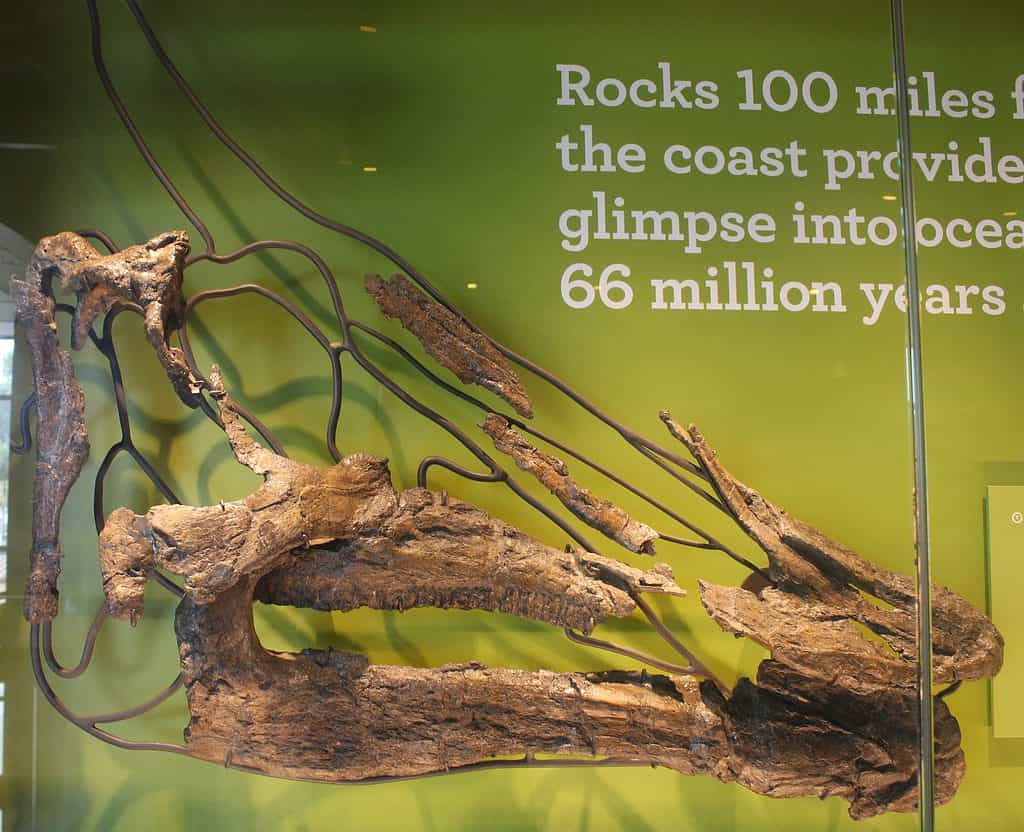
was a primarily quadrupedal herbivore.
©Jonathan Chen, CC BY-SA 4.0 <https://creativecommons.org/licenses/by-sa/4.0>, via Wikimedia Commons - License
The state of California named Augustynolophus morrisi its official state dinosaur in 2017. It was a saurolophine hadrosaur from the Late Cretaceous. Researchers named the type species from fossils found in the state’s Moreno Formation.
California: Smilodon californicus (State Fossil)

Saber-toothed cats were felid carnivores with huge upper canine teeth and wide gapes.
©Jeff Colburn/iStock via Getty Images
California also named Smilodon californicus its official state fossil in 1974. Fossils are found in the La Brea tar pits, such as the skull preserved in a resin block shown in the photo above.
Colorado: Stegosaurus (State Fossil)

was an armored quadruped herbivore.
©Curt Teich Postcards via Wikimedia Commons / CC0 - License
Colorado named Stegosaurus its official state fossil in 1982. It was a thyreophoran dinosaur from the Late Jurassic. Researchers named the type species Stegosaurus stenops from fossils first found in the state in the late 19th century.
Connecticut: Dilophosaurus (State Dinosaur)
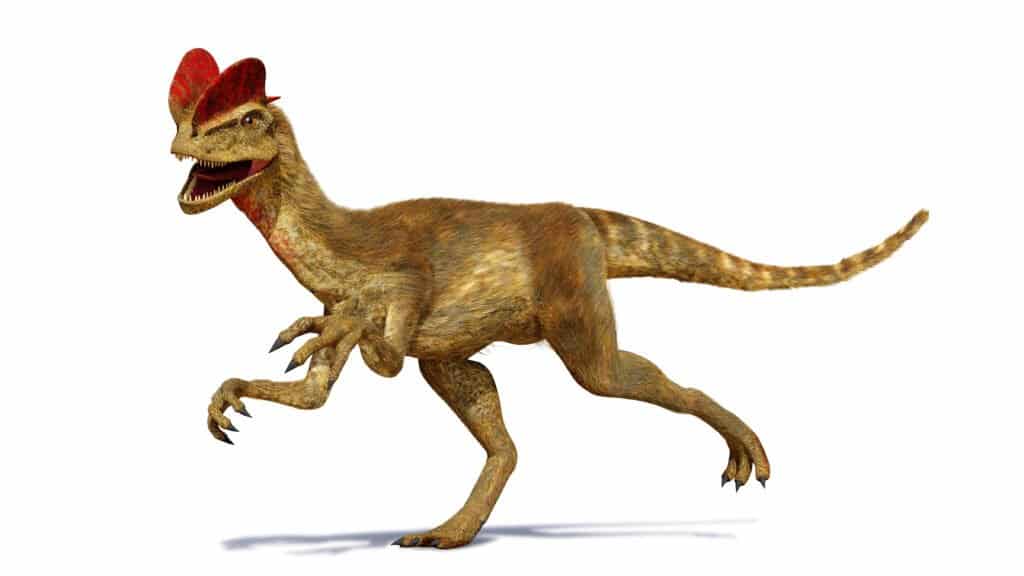
was a bipedal carnivore.
©Dotted Yeti/Shutterstock.com
The state of Connecticut named Dilophosaurusits official state dinosaur in 2017. It was a neotheropod from the Early Jurassic. Researchers named the type species Dilophosaurus wetherilli from fossils found in Arizona, but Dilophosaurus fossil tracks have also been found in Connecticut.
Connecticut: Eubrontes Dinosaur Tracks (State Fossil)

are three-toed tracks belonging to a still undetermined dinosaur genus.
©Daderot / CC BY-SA 3.0 - License
Connecticut also named Eubrontes dinosaur tracks its official state fossil in 1991. The state’s tracks date to the Jurassic and are especially well preserved in Dinosaur State Park and Arboretum, such as those seen in the photo above.
Delaware: Dryptosauridae (State Dinosaur)
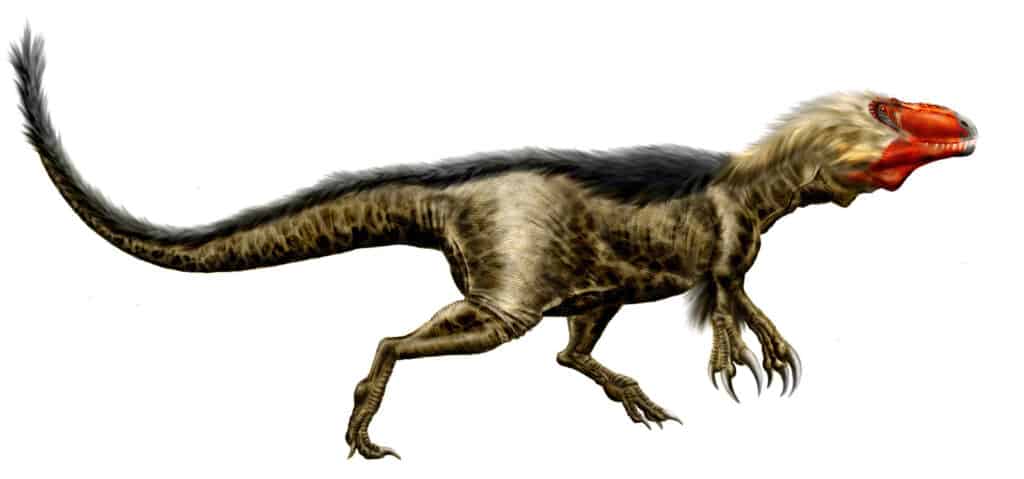
was a bipedal carnivore.
©Josep Asensi: http://durbed.deviantart.com / CC BY 3.0 - License
The state of Delaware named Dryptosauridae its official state dinosaur in 2022. This eotyrannosaur family dates to the Late Cretaceous. Researchers originally named the type species Dryptosaurus aquilunguis from fossils found in Colorado’s Morrison Formation. Delaware’s official proclamation explains that “bones of a dryptosaurid, which were originally thought to be from a Gallimimus or an Ornithomimus, were found in exposures of the Merchantville Formation on the southern bank of the Chesapeake & Delaware Canal…[but] the dryptosaurid bones found in Delaware have not been given a formal name yet because they have not completed the rigorous scientific review process for naming new species.”
Delaware: Belemnitella americana (State Fossil)
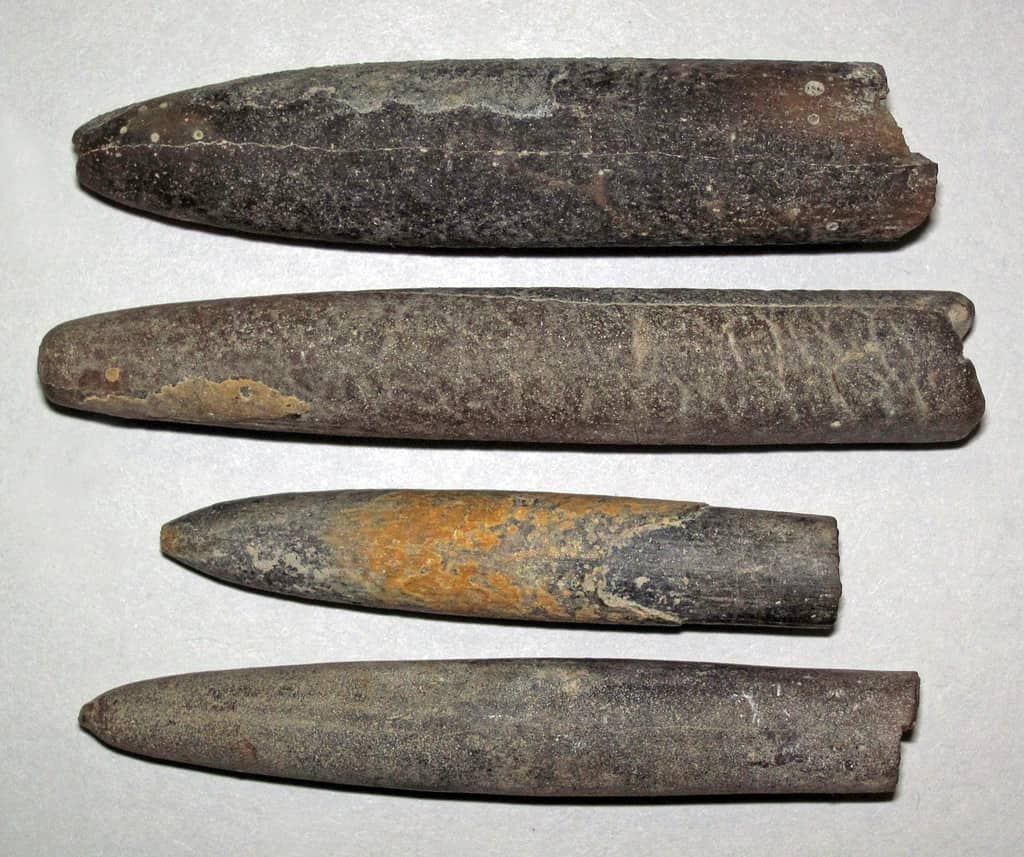
Belemnites were cephalopod mollusks.
©James St. John / CC BY 2.0 - License
Delaware also named Belemnitella americana its official state fossil in 1996. This belemnite species dates to the Late Cretaceous and is particularly abundant in the state’s Mount Laural Formation.
Florida: Agatized Coral (Anthozoa) (State Stone)
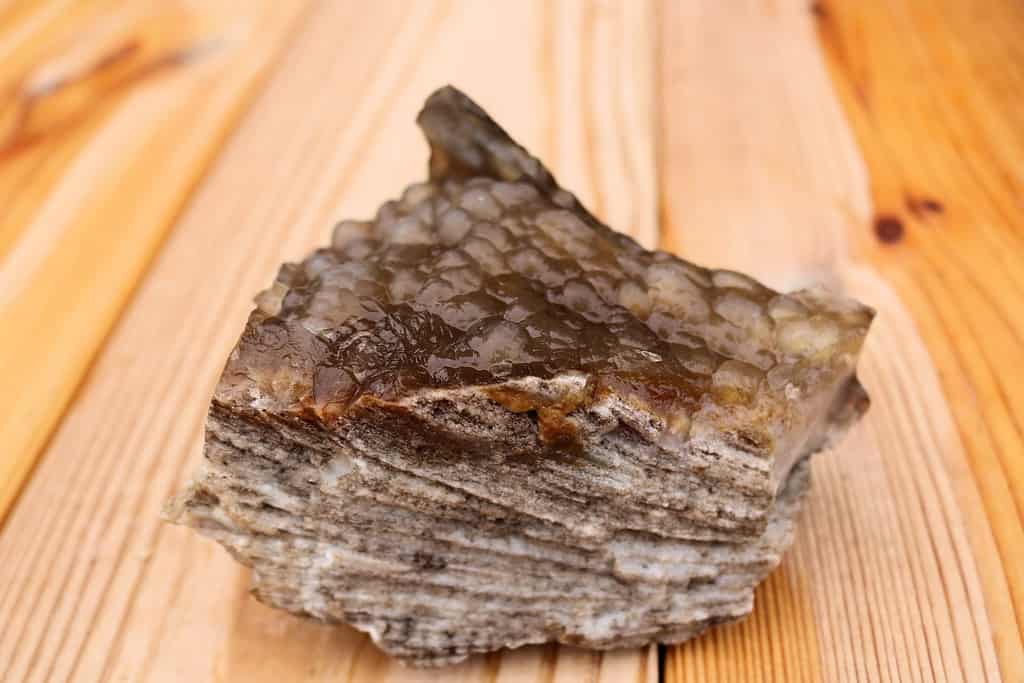
Agatized coral consists of mineralized fossil coral exoskeletons.
©TAMMY M JOHNSON/Shutterstock.com
Florida named agatized coral (Anthozoa) its official state stone in 1979. Florida’s agatized coral dates to the Oligocene and Miocene and exists mainly in Tampa Bay, the Econfina River, and the Withlacoochee-Suwannee River beds.
Georgia: Fossil Shark Teeth (Selachimorpha) (State Fossil)

Sand
tiger
shark (
Carcharias taurus) fossil teeth are just one of many species you may find in Georgia.
©Mark_Kostich/Shutterstock.com
Georgia simply named “fossil shark teeth” its official state fossil in 1976. No specific kind was specified, perhaps in recognition that fossil shark teeth from a plethora of extinct species are plentiful across the state’s coastal areas.
Idaho: Oryctodromeus (State Dinosaur)
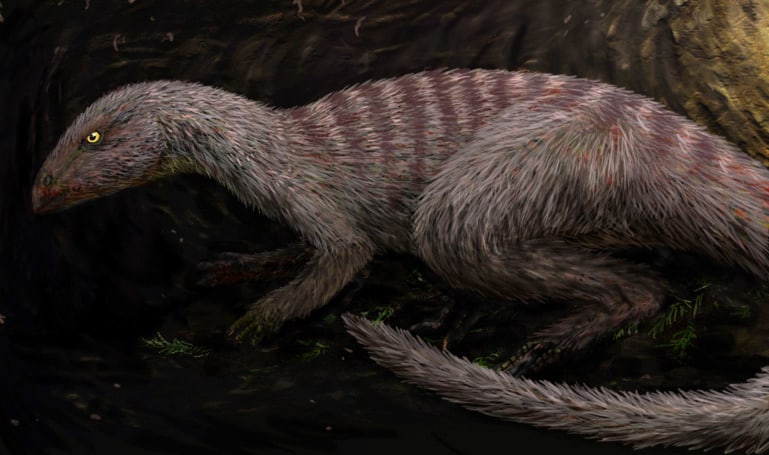
was a burrowing bipedal herbivore.
©FunkMonk (Michael B. H.), CC BY-SA 3.0 - License
The state of Idaho named Oryctodromeus its official state dinosaur in 2023. It was an orodromine from the Late Cretaceous. Researchers named the type species Oryctodromeus cubicularis from fossils found in Montana’s Blackleaf Formation, but numerous fossils are also known from Idaho’s Wayan Formation.
Idaho: Hagerman Horse Equus simplicidens (State Fossil)
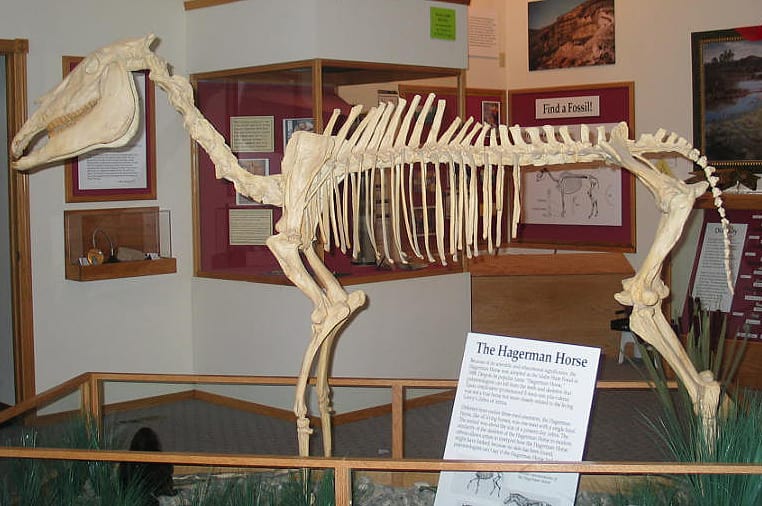
The Hagerman
horse
is also known as the American zebra.
©NPS via Wikimedia Commons / CC0 - License
Idaho also named the Hagerman horse (Equus simplicidens) its official state fossil in 1988. This equid dates to between the Pliocene and Early Pleistocene. Researchers named the type species from fossils found in 1928 in Hagerman, OH.
Illinois: Tully Monster Tullimonstrum gregarium (State Fossil)

The Tully monster was an aquatic invertebrate, but little else is known about its identity.
©Kimberly Boyles/Shutterstock.com
Illinois named the Tully monster (Tullimonstrum gregarium) its official state fossil in 1989. This enigmatic bilaterian dates to the Pennsylvanian and is only known from the state’s Mazon Creek fossil beds.
Indiana: Mastodon Mammut sp. (State Fossil)
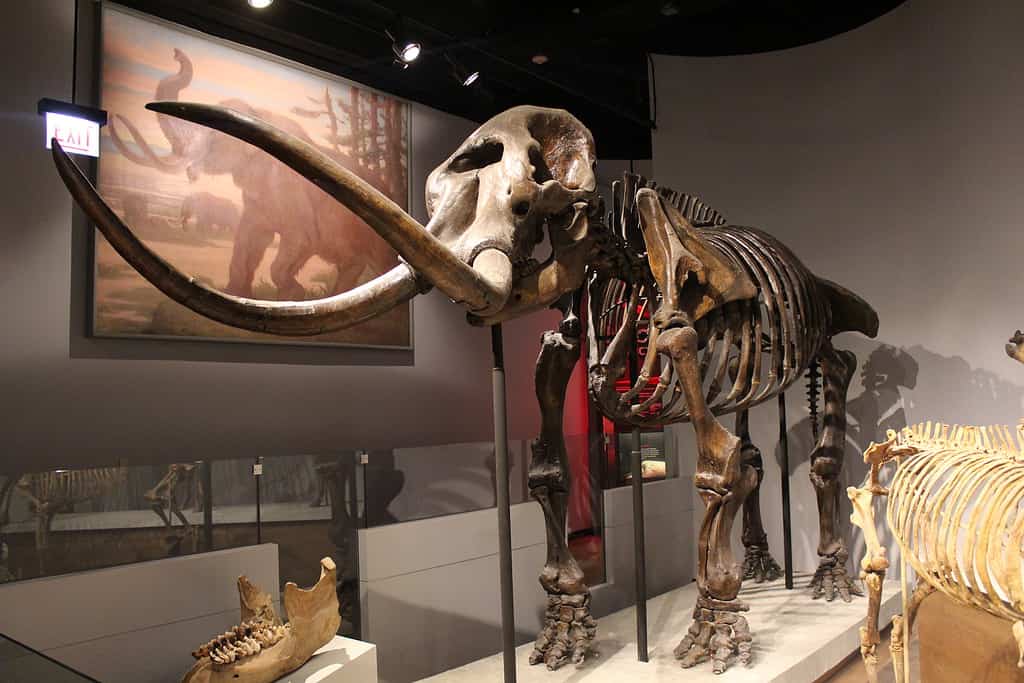
Like modern
elephants
, mastodons were large quadruped herbivores.
©Jonathan Chen / CC BY-SA 4.0 - License
Indiana named the mastodon (Mammut sp.) its official state fossil in 2022. Several named species date from the Late Miocene to the Holocene, with fossils found across the state.
Kansas: Pteranodon (State Flying Fossil)

was a large flying reptile with a toothless beak.
©Captain Wang/Shutterstock.com
The state of Kansas named Pteranodon its official state flying fossil in 2014. This pterosaur genus dates to the Late Cretaceous. The type species Pteranodon longiceps was named from fossils found in the state’s Smoky Hill Chalk Member deposits in 1871.
Kansas Tylosaurus (State Marine Fossil)
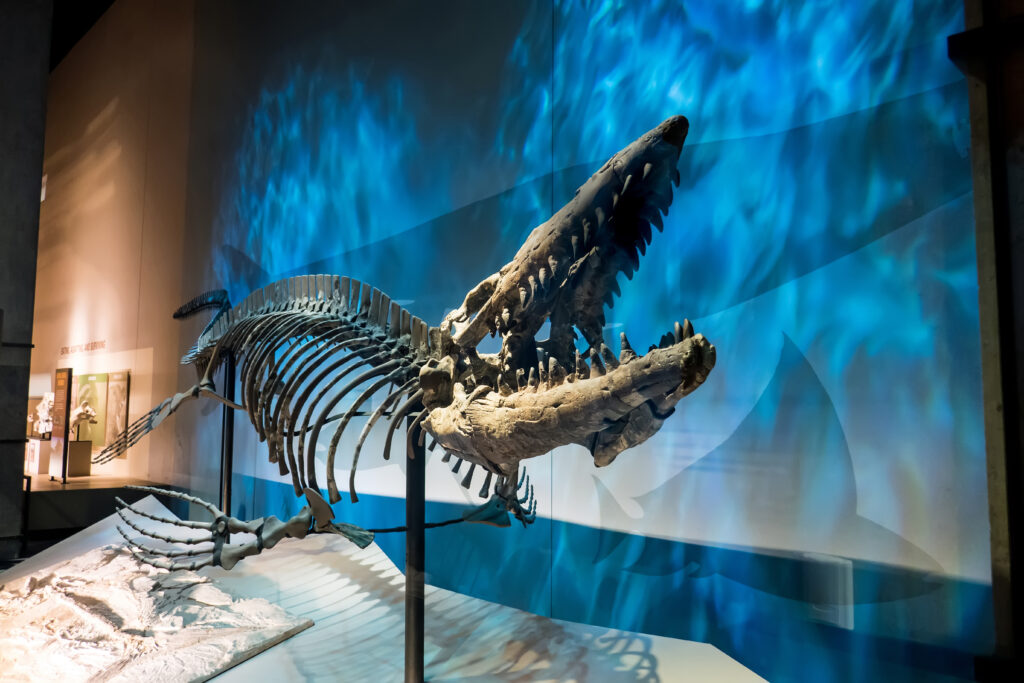
was a predatory marine reptile.
©William Cushman/Shutterstock.com
Kanas also named Tylosaurus its official state marine fossil in 2014. This mososaur genus dates to the Late Cretaceous and its fossils are found across areas of the state once covered by the Western Interior Seaway.
Kansas: Jelinite (State Gemstone)

Although often utilized as a gemstone, amber is, in fact, fossilized tree resin.
©Michele Ursi/iStock via Getty Images
Kanas also named jelinite, a type of amber also formerly known as kansasite, its official state gemstone in 2018. It was first discovered along the Smoky Hill River in Ellsworth County and later named for its finder, George Jelinek.
Kentucky: Brachipod (Brachiopoda) (State Fossil)

Brachiopods were marine shelled invertebrates.
©HodagMedia/Shutterstock.com
Kentucky named the brachiopod (Brachiopoda) its official state fossil in 1986. Brachipod fossils dated from the Ordovician through the Pennsylvanian are plentiful in the state.
Louisiana: Petrified Palmwood Palmoxylon (State Fossil)

is common across the Catahoula Formation of both Texas and Louisiana, prompting both states to select it as a state symbol.
©Tiia Monto / CC BY-SA 3.0 - License
The state of Louisiana named petrified palmwood (Palmoxylon) its official state fossil in 1976. This fossilized palm dates from the Late Cretaceous to the Early Miocene and is found in the state’s Catahoula Formation.
Maine: Pertica quadrifaria (State Fossil)

is an early vascular plant.
©Falconaumanni / CC BY-SA 3.0 - License
Maine named Pertica quadrifaria its official state fossil in 1976. This euphyllophyte plant dates to the Devonian. Researchers named the type species from fossils found in the state’s Trout Valley Formation.
Maryland: Astrodon johnstoni (State Dinosaur)
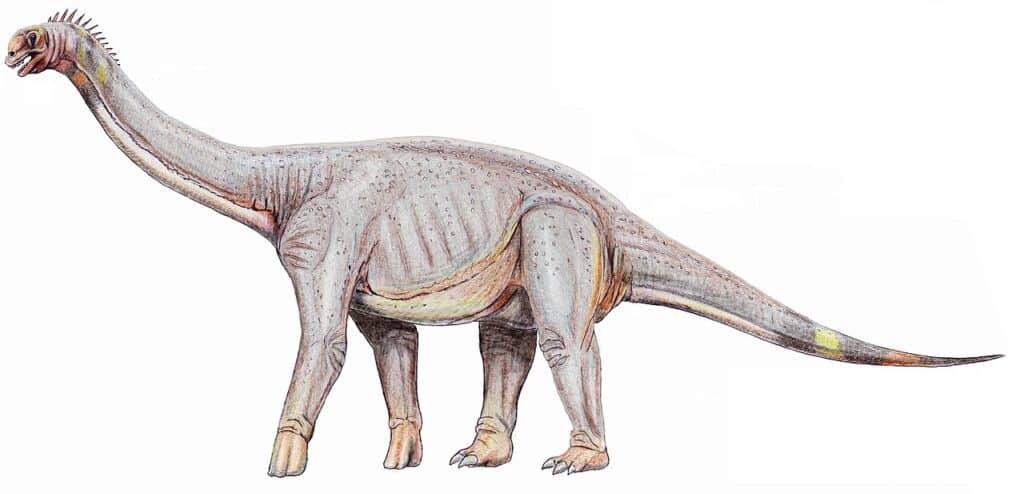
was a quadruped herbivore.
©Dmitry Bogdanov / CC BY 3.0 - License
The state of Maryland named Astrodon johnstoni its official state dinosaur in 1998. It was a titanosaur from the Early Cretaceous. Researchers named the type species from fossils found in the state’s Arundel Formation.
Maryland: Ecphora gardneraegardnerae (State Fossil)
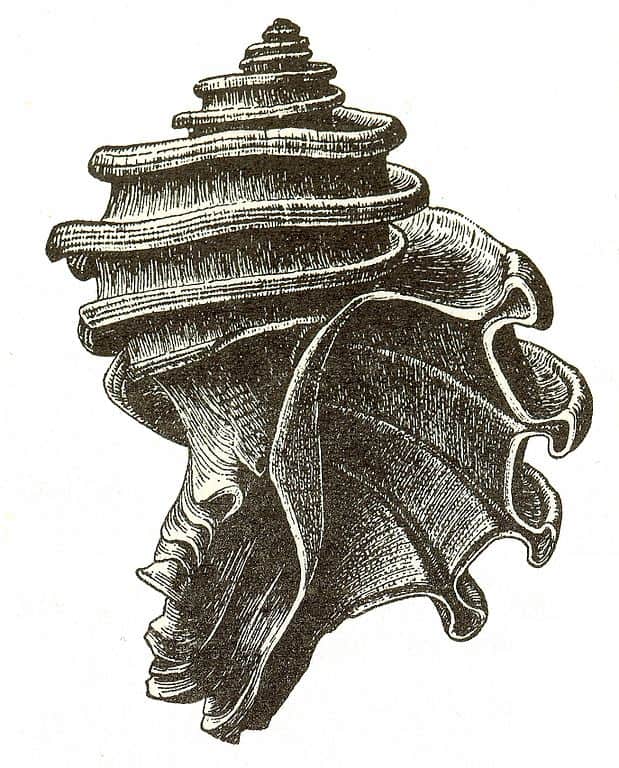
was a predatory marine snail.
©Ecphora / public domain - License
Maryland also named Ecphora gardneraegardnerae (formerly Ecphora quadricostata) its official state fossil in 1984, revising the name in 1994. This gastropod dates to the Miocene and is a subspecies of a species only known from deposits in both Maryland and Virginia.
Massachusetts: Podokesaurus holyokensis (State Dinosaur)
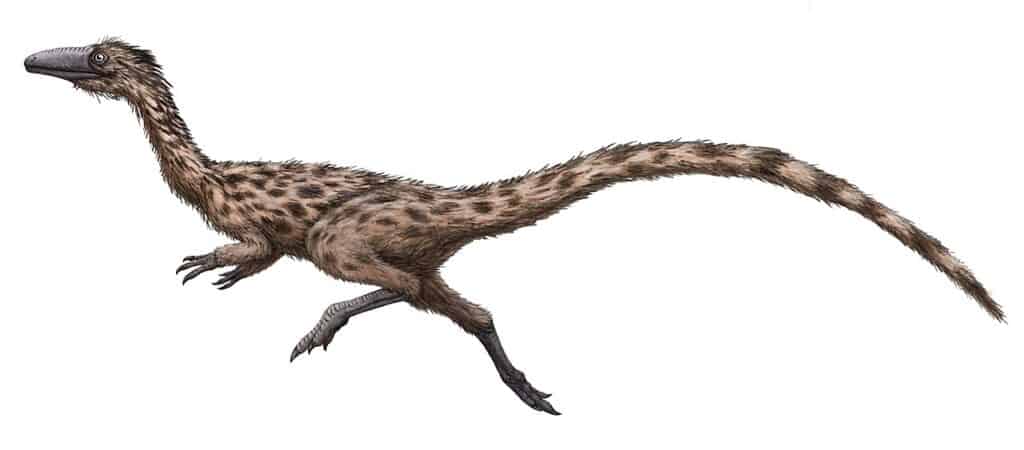
was a bipedal carnivore.
©FunkMonk (Michael B. H.) / CC BY-SA 3.0 - License
The state of Massachusetts named Podokesaurus holyokensis its official state dinosaur in 2021. It was a coelophysoid from the Early Jurassic. Researchers named the type species from fossils found in Mount Holyoke, MA.
Massachusetts: Eubrontes Dinosaur Tracks (State Fossil)

are three-toed tracks belonging to a still undetermined dinosaur genus.
©Daderot / CC BY-SA 3.0 - License
Massachusetts also named Eubrontes dinosaur tracks its official state fossil in 1980. The state’s tracks date to the Jurassic and are scattered across the Connecticut River Valley region.
Michigan: American Mastodon Mammut americanum (State Fossil)

The American mastodon is perhaps the most famous mastodon species.
©Jonathan Chen / CC BY-SA 4.0 - License
Michigan named the American mastodon (Mammut americanum) its official state fossil in 2002. This mastodon species dates to between the Mid Pliocene and Late Pleistocene. Its fossils have been found at over 250 locations across the state.
Michigan: Petoskey Stone (Hexagonaria percarinata) (State Stone)
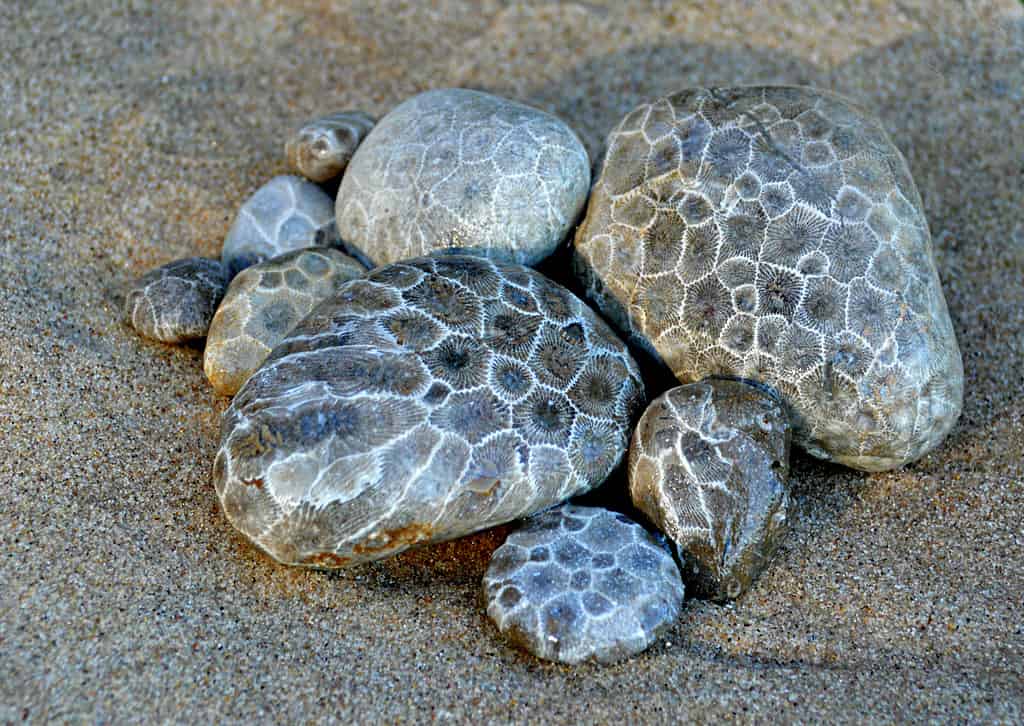
is a type of rugose coral.
©simplycmb/iStock via Getty Images
Michigan also named the Petoskey stone its official state stone in 1965. It is formed by fossilized Hexagonaria percarinata coral. It dates to the Givetian and is found in the state’s Lower Peninsula.
Mississippi “Prehistoric Whales”(Basilosaurus cetoides and Zygorhiza kochii)
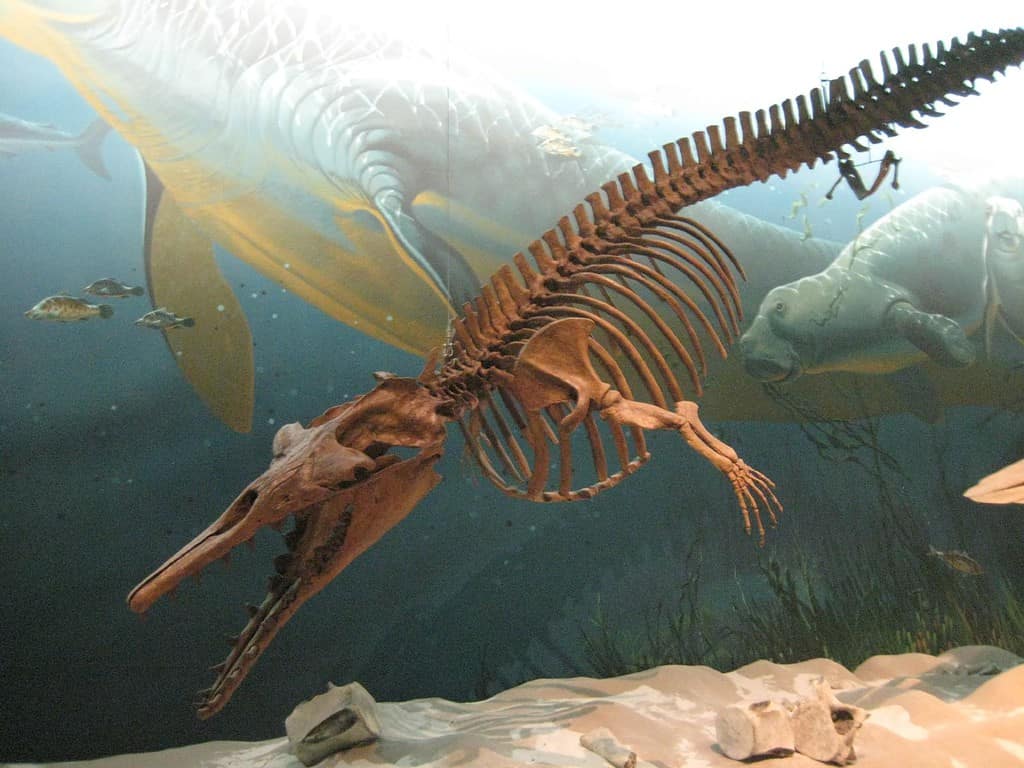
Mississippi’s “prehistoric whales” were both basilsaurids.
©Claire H. from New York City, USA / CC BY-SA 2.0 - License
The state of Mississippi named “prehistoric whales” its official state fossil in 1981. Both Basilosaurus cetoides and Zygorhiza kochii fossils have been found in the state.
Mississippi Petrified Wood (State Stone)
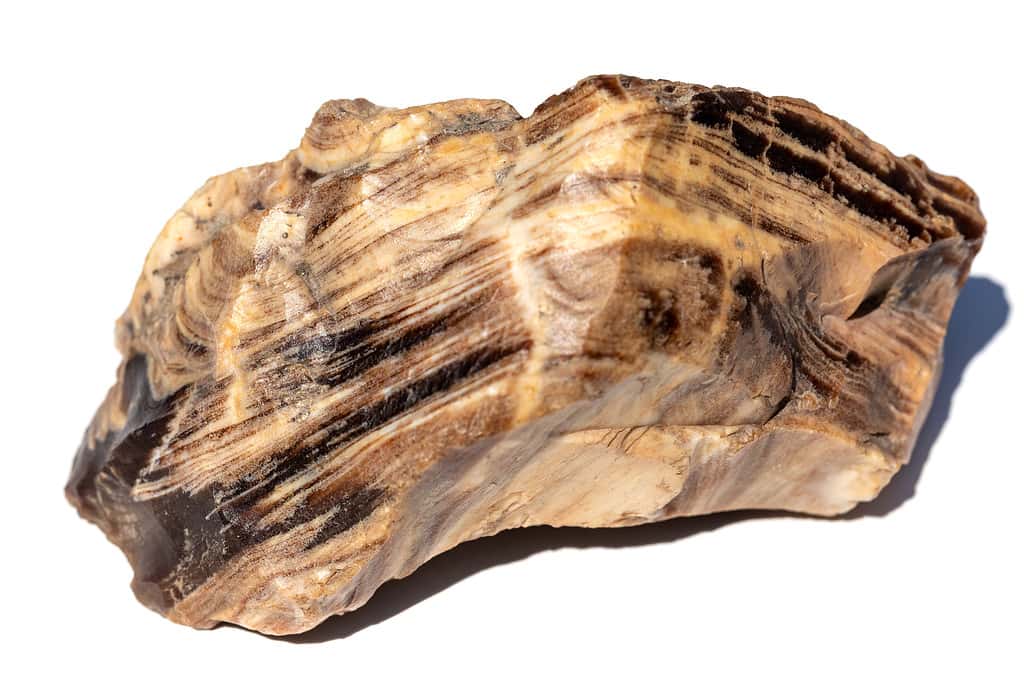
While petrified wood is often referred to as a rock or gem, it is a type of wood fossil formed by permineralization.
©Lari Bat/iStock via Getty Images
Mississippi also named petrified wood its official state stone in 1976. The state is home to Mississippi Petrified Forest.
Missouri: Parrosaurus missouriensis aka Hypsibema missouriensis (State Dinosaur)
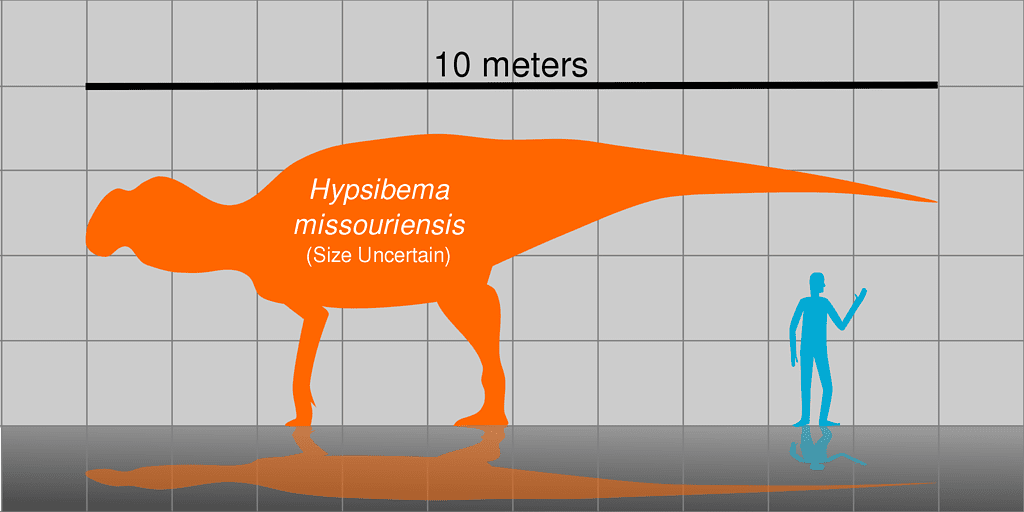
(
Hypsibema)
missouriensiswas a quadruped herbivore.
©User:Slate Weasel, Public domain, via Wikimedia Commons - License
The state of Missouri named Parrosaurus missouriensis its official state dinosaur in 2004. It was an ornithopod from the Late Cretaceous. Researchers named the type species from fossils found in Bollinger County, MO.
Missouri: Eperisocrinus missouriensis (State Fossil)

S
Eperisocrinus missouriensiswas an
echinoderm
.
©Missouri State Archives via Flickr / CC0 - License
Missouri also named Eperisocrinus missouriensis (formerly Delocrinus missouriensis) its official state fossil in 1989. This stalked crinoid species dates to the Carboniferous. The type species was named from fossils found in the state’s Upper Coal Measures in the late 19th century.
While stalked crinoids are also called sea lilies, they are, in fact, animals. Furthermore, hundreds of species still exist today!
Montana: Maiasaura peeblesorum (State Fossil)

was an herbivore that was capable of walking both bipedally and quadrupedally.
©Teresa Otto/Shutterstock.com
Montana named Maiasaura peeblesorum its official state fossil in 1985. It was a saurolophine hadrosaur (aka duck-billed dinosaur) from the Late Cretaceous. Researchers named the type species from fossils found in the state’s Two Medicine Formation.
Nebraska: Mammoth Mammuthus sp. (State Fossil)
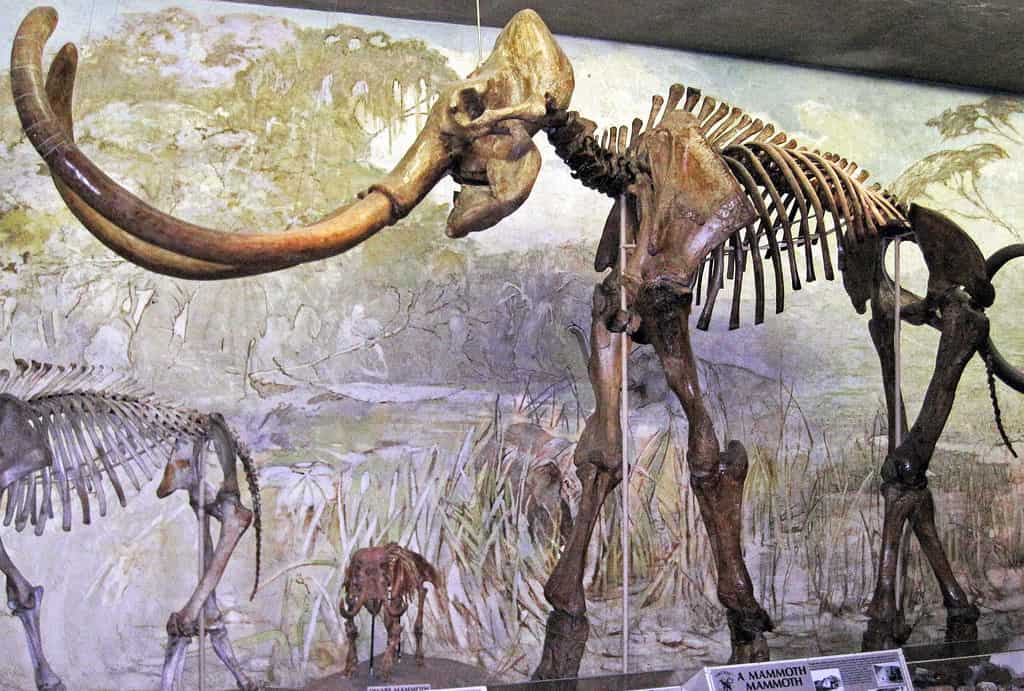
“Archie” is on display at the University of Nebraska State Museum.
©James St. John / CC BY 2.0 - License
Nebraska Pleistocene named the mammoth (Mammuthus sp.) its official state fossil in 1967. Several named species date from the Early Pliocene to Late Holocene. The state’s most famous mammoth is “Archie,” a Columbian mammoth and the largest mounted mammoth specimen in the U.S.
Nevada: Shonisaurus popularis (State Fossil)
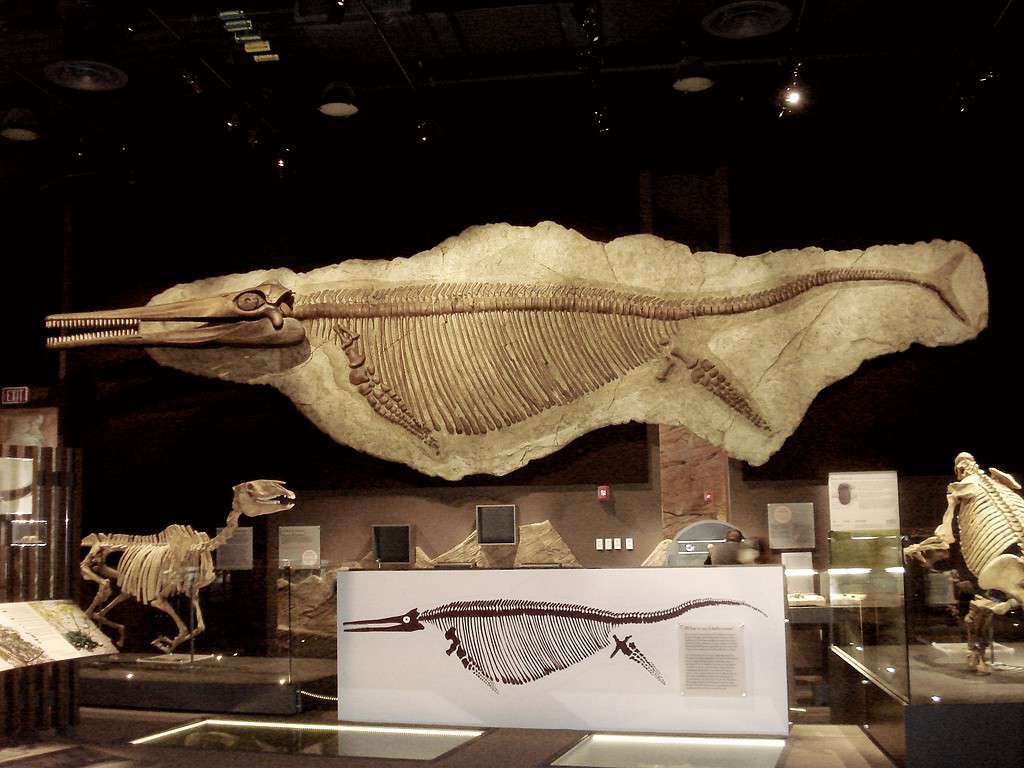
was a predatory marine reptile.
©Carpenter, Kenneth / CC BY-SA 4.0 - License
Nevada named Shonisaurus popularis its official state fossil in 1977. This ichthyosaur species dates to the Late Triassic. Researchers named the type species from fossils found in the state’s Luning Formation.
New Jersey: Hadrosaurus foulkii 1991 (State Dinosaur)
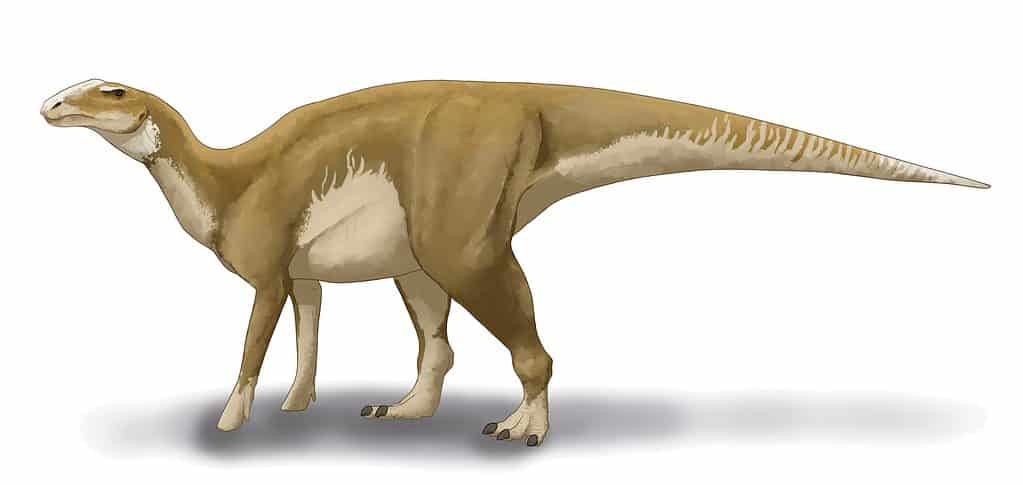
was a primarily quadrupedal herbivore.
©Audrey.m.horn, CC BY-SA 4.0 <https://creativecommons.org/licenses/by-sa/4.0>, via Wikimedia Commons
The state of New Jersey named Hadrosaurus foulkii its official state dinosaur in 1991. It was a hadrosaur from the Late Cretaceous. Researchers named the type species from fossils found in the state’s Woodbury Formation.
New Mexico: Coelophysis (State Fossil)
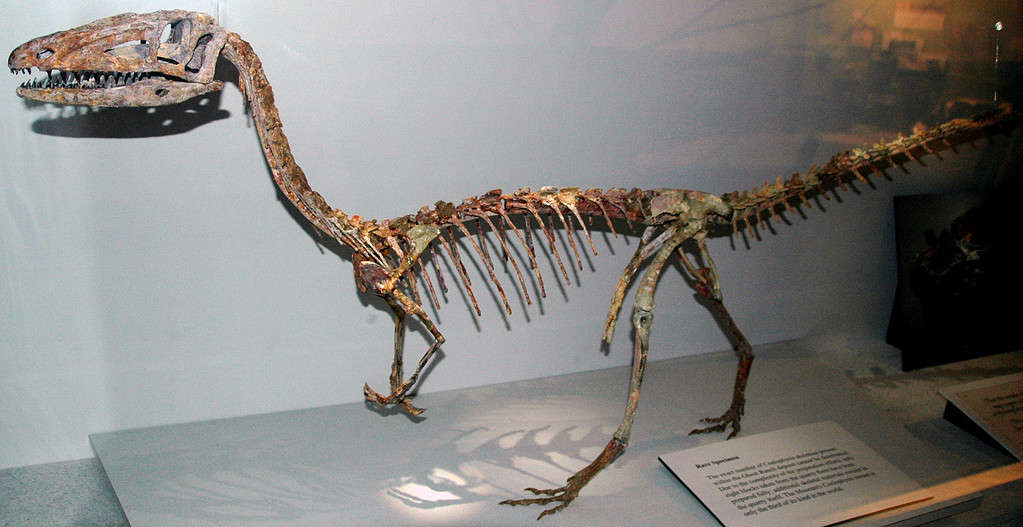
was a bipedal carnivore.
©James St. John, CC BY 2.0 - License
The state of New Mexico named Coelophysis its official state fossil in 1981. It was a coelophysid from the Late Triassic. Researchers named the type species Coelophysis bauri from fossils found in 1871 in the state’s Chinle Formation.
New York: Eurypterus remipes (State Fossil)

was a marine arthropod.
©topimages/Shutterstock.com
New York named Eurypterus remipes its official state fossil in 1984. This sea scorpion dates to the Silurian and their fossils are abundant in the Buffalo area.
North Carolina: Megalodon Shark Tooth Otodus megalodon (State Fossil)
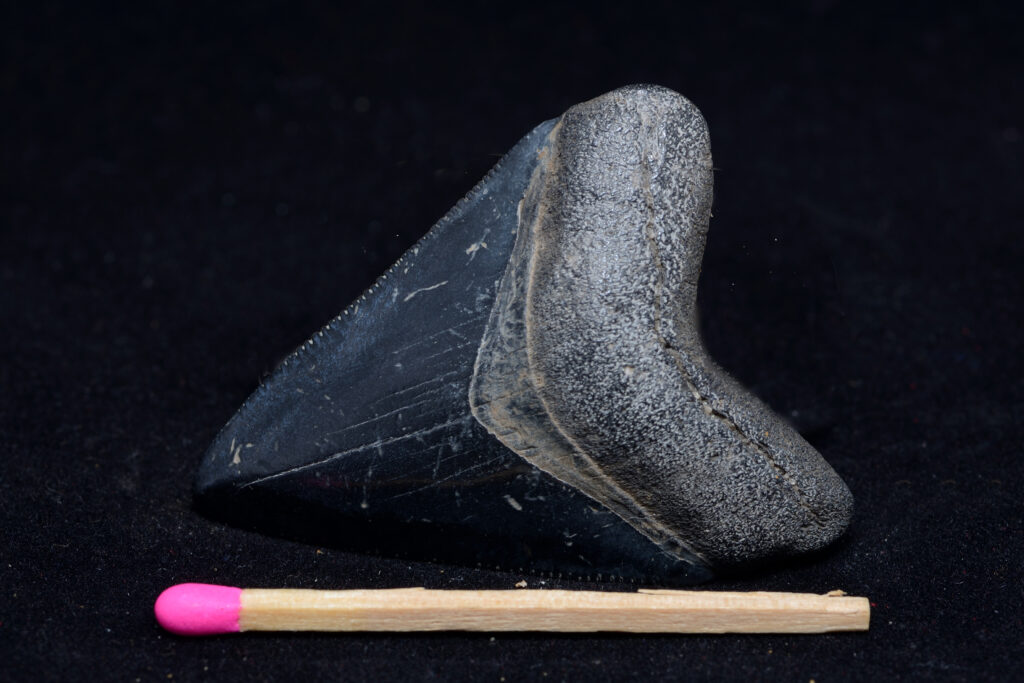
was a large species of mackerel shark.
©Lakeview Images/Shutterstock.com
The state of North Carolina named the tooth of the megalodon (Otodus megalodon) its official state fossil in 2013. This megatoothed shark lived from the Early Miocene to the Early Pliocene. These fossil teeth can be found in the state’s coastal areas.
North Dakota: Teredo-Bored Petrified Wood (State Fossil)
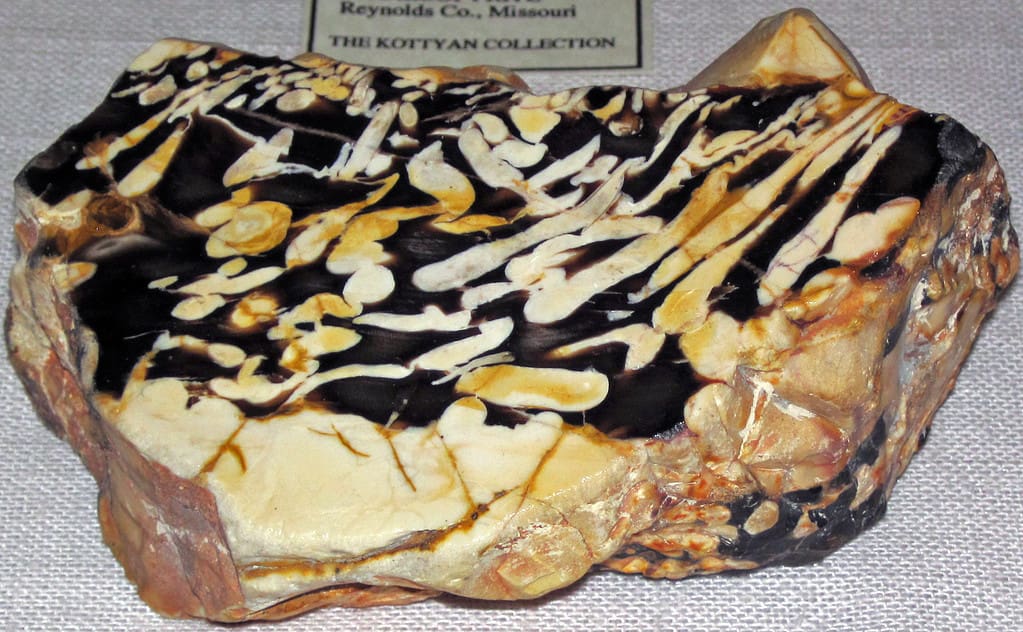
are commonly called “shipworms,” but are actually saltwater clams that bore into wood.
©James St. John / CC BY 2.0 - License
North Dakota named Teredo-bored petrified wood its official state fossil in 1967. This unusual fossil was formed by wood previously infested by Teredo later becoming petrified.
Ohio: Isotelus (State Fossil Invertebrate)

was a marine arthropod.
©iStock.com/markchentx
The state of Ohio named Isotelus its official state fossil invertebrate in 1985. This trilobite genus dates to the Ordovician and occurs in outcrops in southwestern Ohio.
Ohio: Dunkleosteus Dunkleosteus terrelli (State Fossil Fish)

was an armored placoderm fish.
©James St. John / CC BY 2.0 - License
Ohio also named dunkleosteus (Dunkleosteus terrelli) its official state fossil fish in 2021. This Dunkleosteus species dates to the Late Devonian. Researchers named the type species from fossils found in 1867 in Sheffield Lake, OH.
Oklahoma: Acrocanthosaurus atokensis (State Dinosaur)
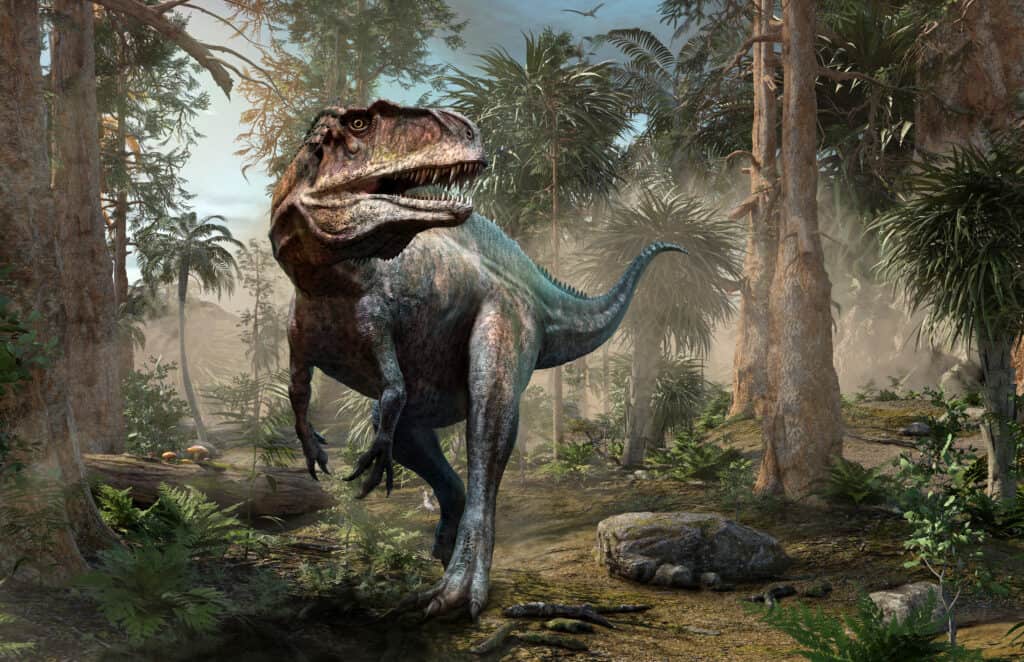
was a bipedal carnivore.
©Warpaint/Shutterstock.com
The state of Oklahoma named Acrocanthosaurus atokensis its official state dinosaur in 2006. It was a carcharodontosaur from the Early Cretaceous. Researchers named the type species from fossils found in Atoka County, OK.
Oklahoma: Saurophaganax maximus (State Fossil)
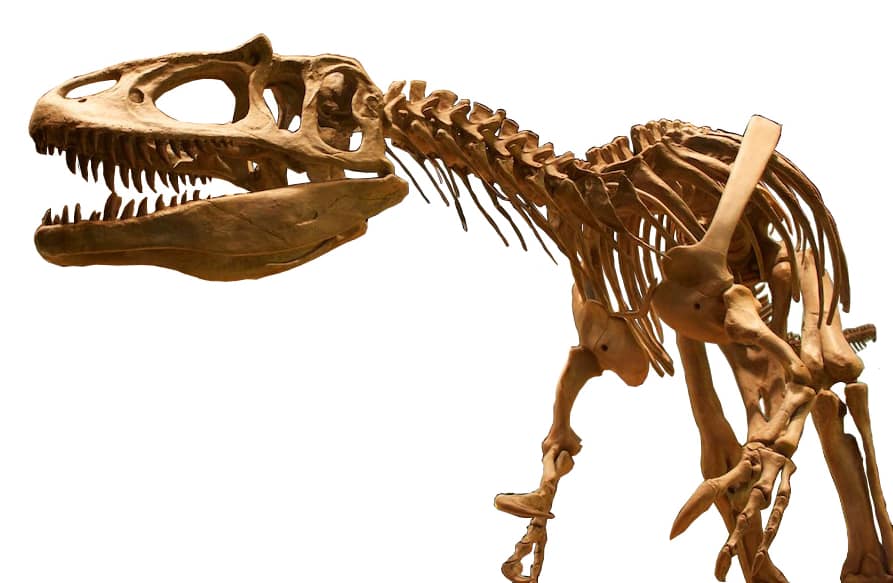
was a bipedal carnivore.
©Chris Dodds from Charleston, WV, USA / CC BY-SA 2.0 - License
Oklahoma also named Saurophaganax maximus its official state fossil in 2000. It was an allosaurid from the Late Jurassic. The type species was named from fossils found in Cimarron County, OK.
Oregon: Dawn Redwood Metasequoia sp. (State Fossil)

The dawn redwood is an example of a “lazarus taxon.”
©PICCOLOGEOGRAPHIC/iStock via Getty Images
Oregon named the dawn redwood (Metasequoia sp.) its official state fossil in 2005. Fossils of these confiers date back to the Late Cretaceous. The entire genus was long presumed extinct until a living species was rediscovered in China in the 1940s. Its seeds were imported to Oregon, and today the dawn redwood once again grows in the state!
Pennsylvania: Phacops rana (State Fossil)
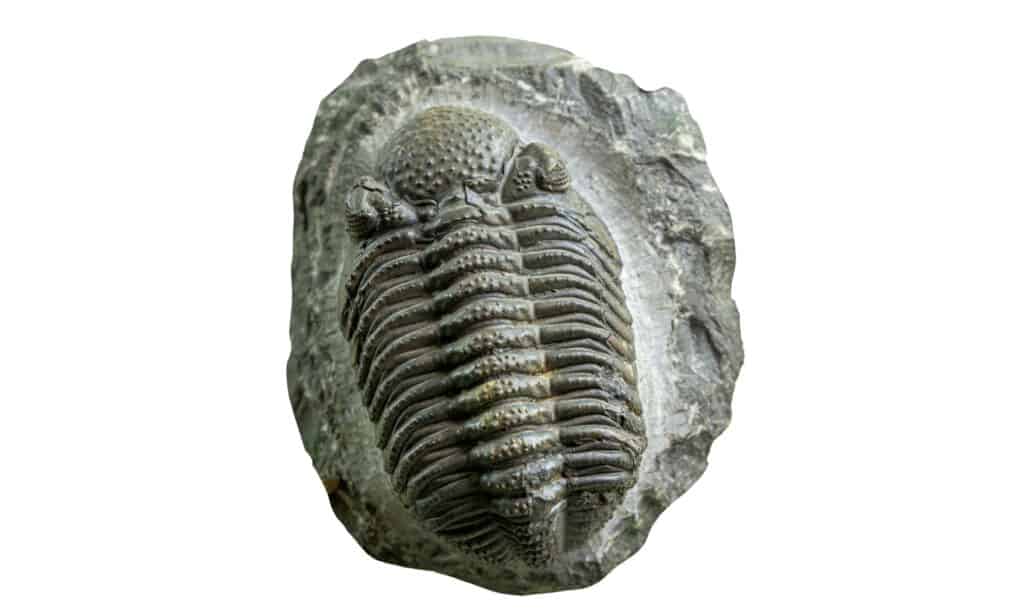
was a marine arthropod.
©iStock.com/dmitriymoroz
Pennsylvania named Phacops rana its official state fossil in 1988. This trilobite species dates to the Devonian. It is a plentiful fossil across Central Pennsylvania.
South Carolina: Columbian Mammoth Mammuthus columbi (State Fossil)
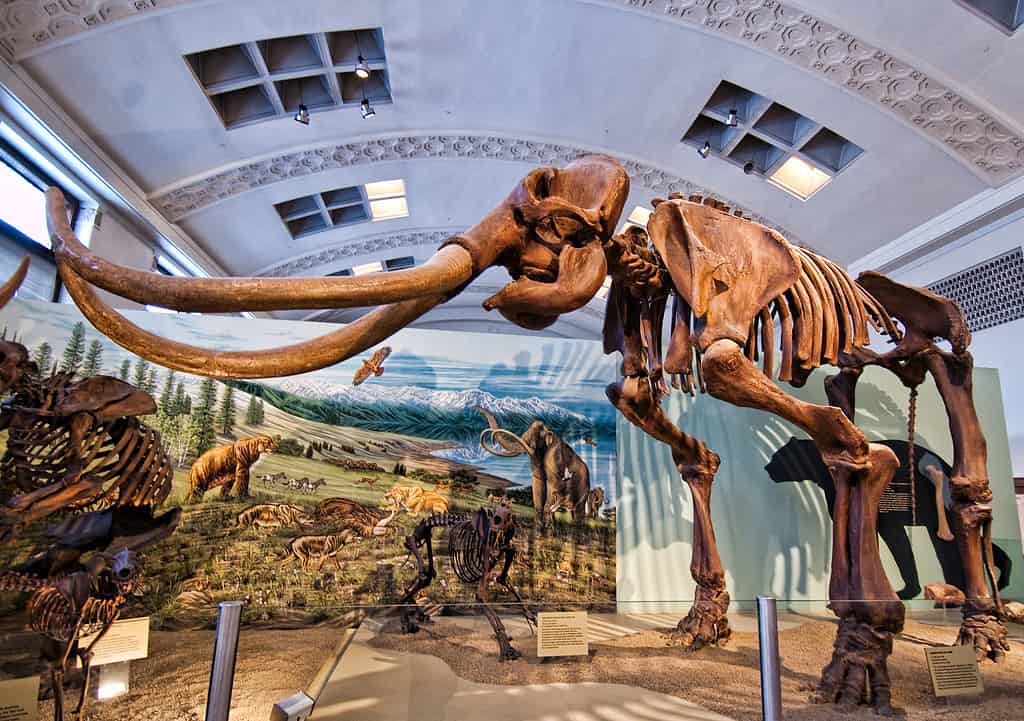
Columbian mammoths could hybridize with woolly mammoths.
©Brett Neilson / CC BY 2.0 - License
The state of South Carolina named the Columbian mammoth (Mammuthus columbi) its official state fossil in 2014. This mammoth species dates to the Pleistocene. Its selection as a state symbol recognizes the fossil teeth that slaves dug up at a plantation in 1725.
South Dakota: Triceratops (State Fossil)

The name “triceratops” means “three-horned face.”
©herraez/iStock via Getty Images
South Dakota named Triceratops its official state fossil in 1988. It was a chasmosaurine ceratopsian from the Late Cretaceous. Researchers named the type species Triceratopshorridus in 1889 from fossils found in the Lance Formation of Wyoming. South Dakota’s fossil is a skeleton excavated in Harding County in 1927.
Tennessee: Pterotrigonia thoracica
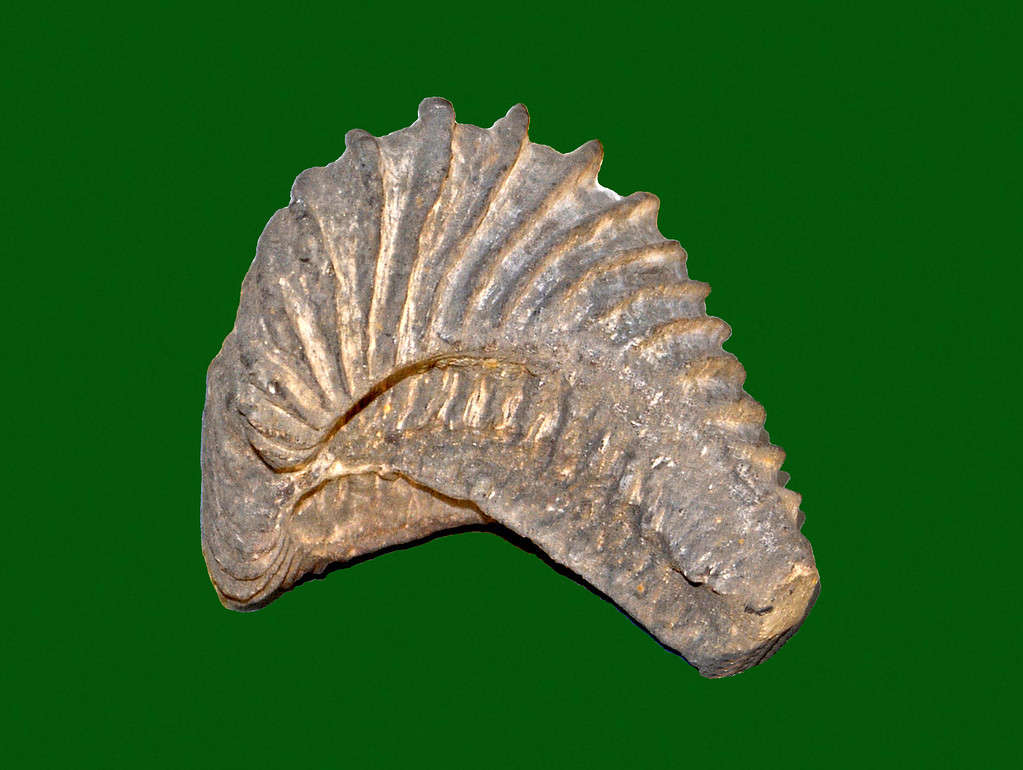
were marine bivalve molluscs.
©Hectonichus / CC BY-SA 3.0 - License
Tennessee named Pterotrigonia thoracica its official state fossil in 1998. This saltwater clam dates to the Cretaceous. It is known from the state’s Coon Creek Formation.
Texas: Sauroposeidon proteles (State Dinosaur)
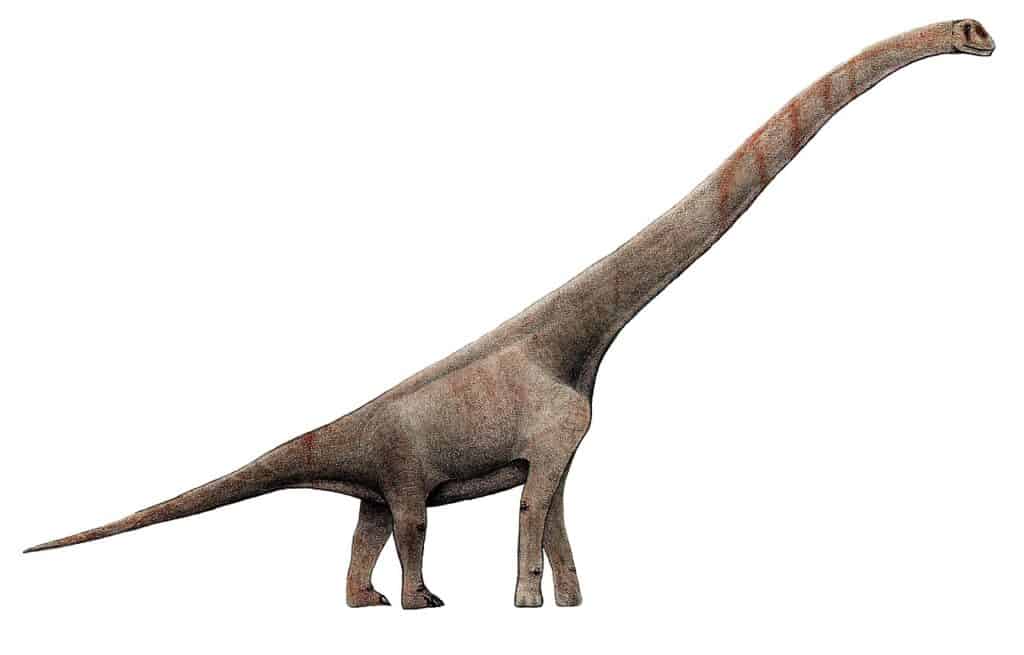
was a quadruped herbivore.
©Levi bernardo / CC BY-SA 3.0 - License
Texas named Sauroposeidon proteles (originally Paluxysaurus jonesi) its official state dinosaur in 2009. It was a macronarian from the Early Cretaceous. Researchers named the type species from fossils found just across the border in Oklahoma. However, this find allowed other fossils from Texas, including those found in the Twin Mountains Formation previously assigned as Paluxysaurus jonesi, to be correctly identified.
Note: this designation replaced Pleurocoelus, which was the official state dinosaur from 1997 –2009.
Texas: Petrified Palmwood Palmoxylon (State Stone)

is common across the Catahoula Formation of both Texas and Louisiana, prompting both states to select it as a state symbol.
©Tiia Monto / CC BY-SA 3.0 - License
Texas also named petrified palmwood (Palmoxylon) its official state stone in 1976. This fossilized palm dates from the Late Cretaceous to the Early Miocene and is found in the state’s Catahoula Formation.
Utah: Utahraptor (State Dinosaur)
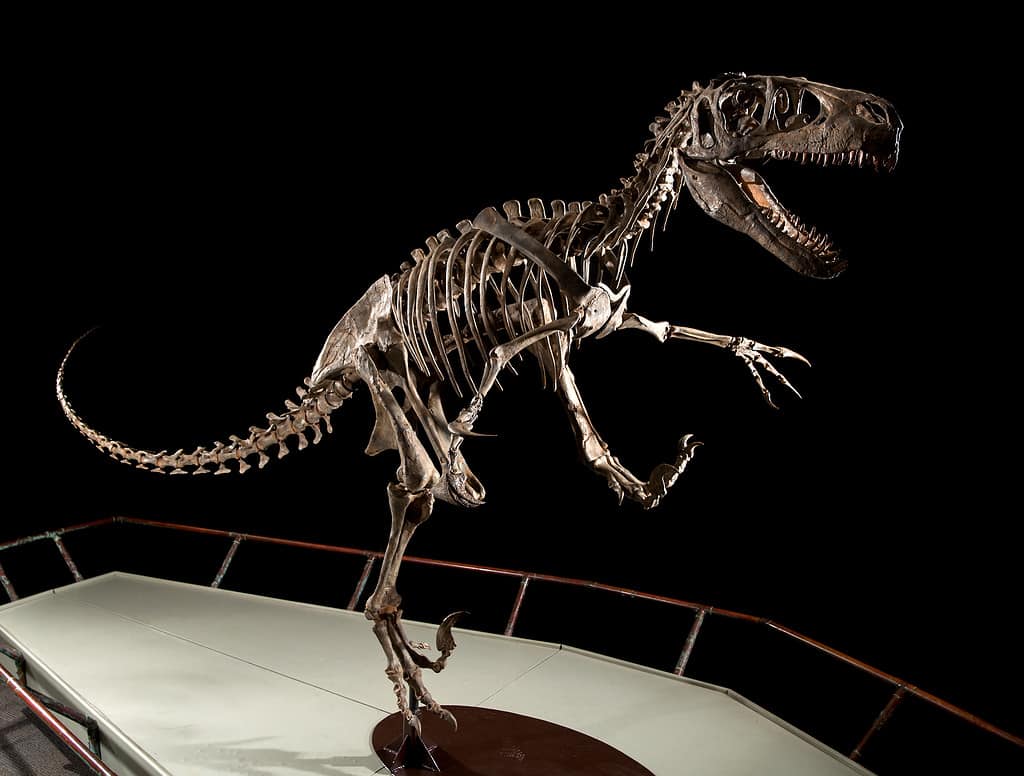
was a bipedal feathered carnivore.
©Jaren Wilkey / CC BY-SA 4.0 - License
The state of Utah named Utahraptor its official state dinosaur in 2018. It was a dromaeosaurid from the Early Cretaceous. Researchers named the type species Utahraptor ostrommaysorum from fossils found in the state.
Utah: Allosaurus (State Fossil)
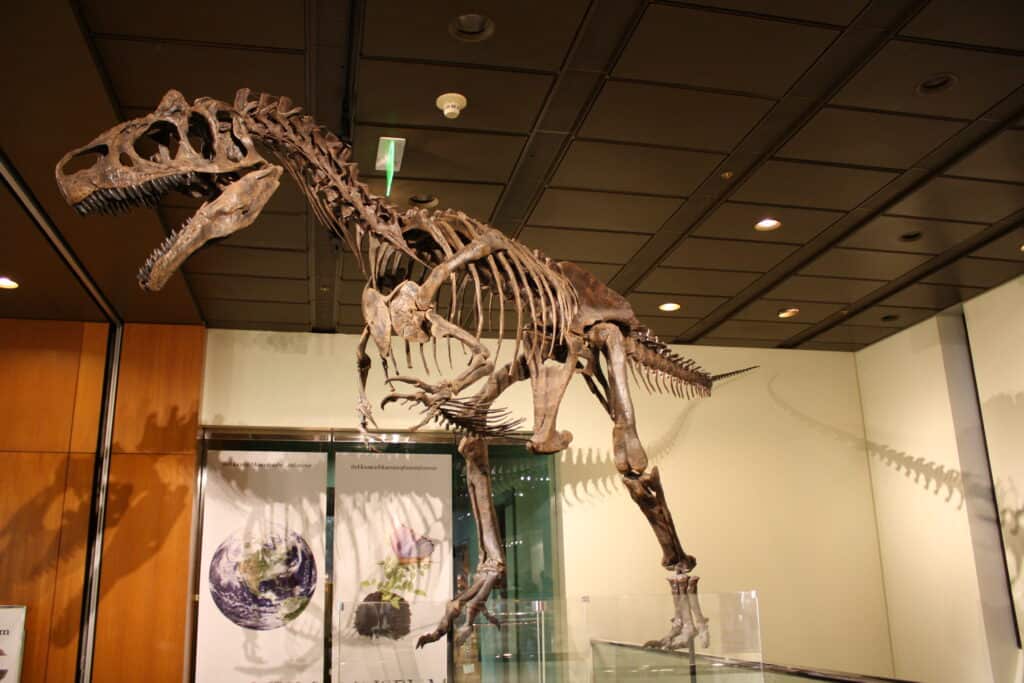
was a bipedal carnivore.
©andytang20 / Flickr - License
Utah also named Allosaurus its official state fossil in 1988. It was an allosaurid dinosaur from the Late Jurassic. Researchers named the type species Allosaurus fragilis from fossils found in the Morrison Formation in Colorado. However, Utah quarries have since yielded numerous well-preserved skeletons, with the Natural History Museum of Utah now boasting the world’s best collection of them.
Vermont: Charlotte Whale (Beluga whale Delphinapterus leucas) (State Marine Fossil)
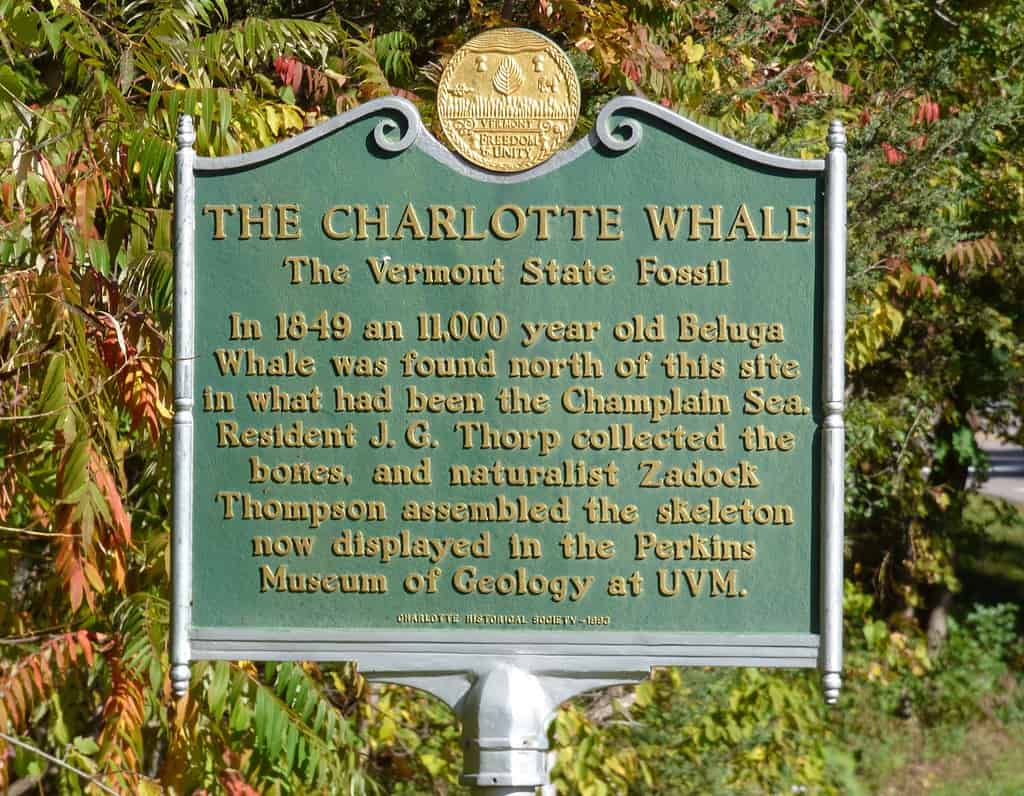
The famous Charlotte Whale has its own state historical marker.
©Niranjan Arminius / CC BY-SA 4.0 - License
The state of Vermont originally named the Charlotte Whale its official state fossil in 1993, then redesignated as the official state marine fossil in 2014. The fossil is a beluga whale (Delphinapterus leucas) skeleton dated to the Pleistocene discovered in Charlotte, VT in 1849.
Vermont: Mount Holly Mammoth (Woolly Mammoth Mammuthus primigenius) (State Terrestrial Fossil)
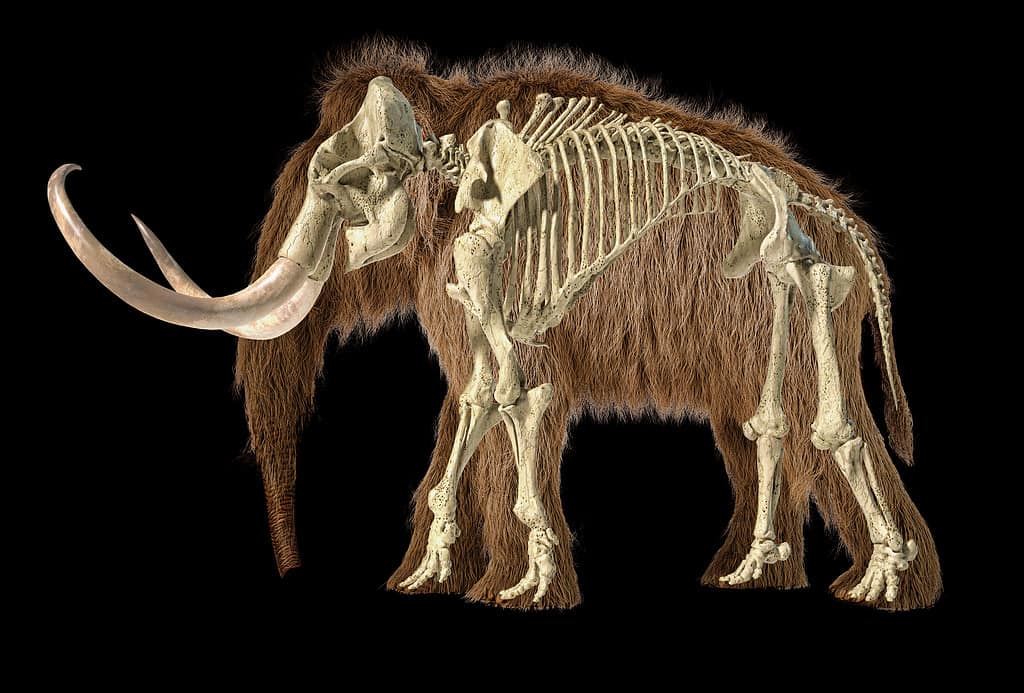
Like modern elephants, mammoths had both tusks and trunks.
©leonello/iStock via Getty Images
Vermont also named the Mount Holly Mammoth its official state terrestrial fossil in 2014. This fossil comprises both a tooth and tusk along with several other bones of a woolly mammoth (Mammuthus primigenius) found in a peat bog in Mount Holly, MA in 1848.
Virginia: Chesapecten jeffersonius (State Fossil)
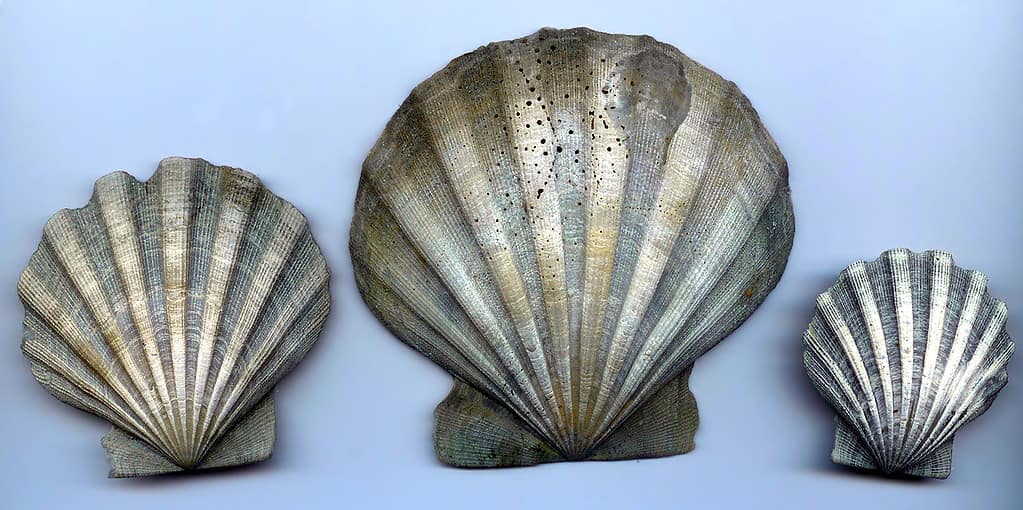
was a bivalve mollusc.
©Nonenmac / CC0 - License
Virginia named Chesapecten jeffersonius its official state fossil in 1993. This scallop species dates to the early Pliocene and is a common fossil along the state’s Coastal Plain cliffs.
Washington: “Suciasaurus rex” (State Dinosaur)
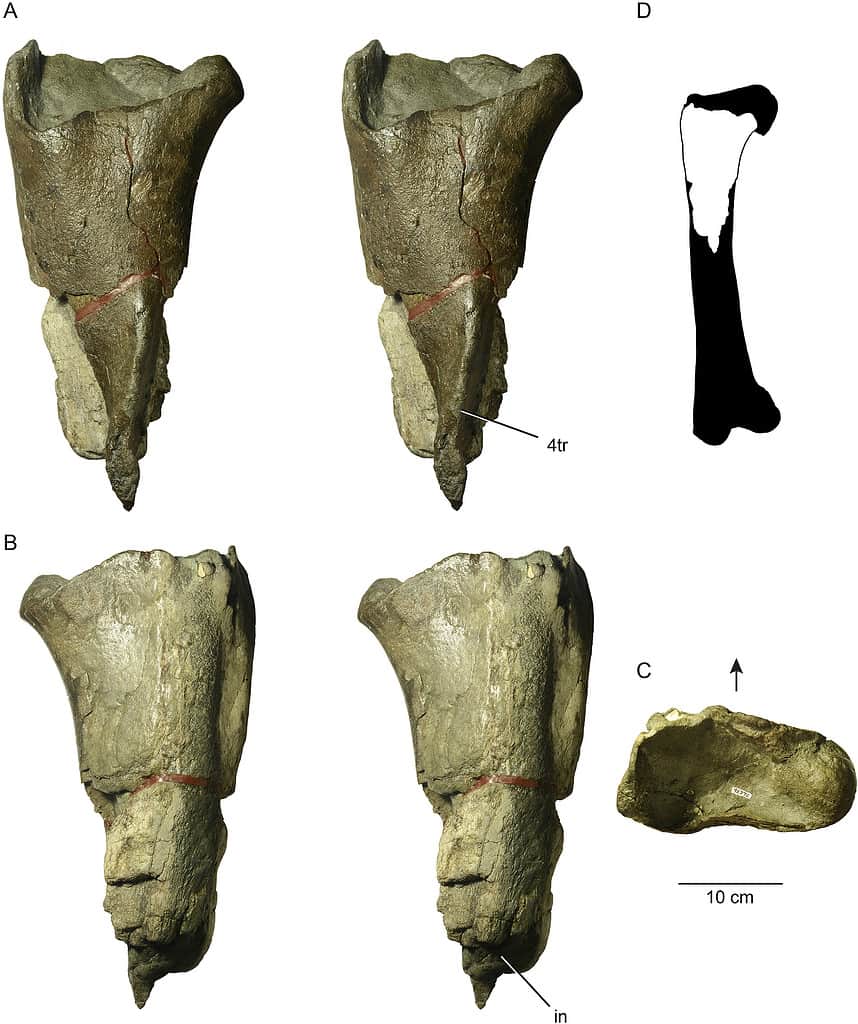
“Suciasaurus rex” might be a tyrannosaur.
©Brandon R. Peecook & Christian A. Sidor / CC BY 4.0 - License
The state of Washington named “Suciasaurus rex” its official state dinosaur in 2023. A theropod femur bone from the Late Cretaceous was found in 2012 at Sucia Island State Park, making it the first dinosaur fossil confirmed in Washington state. Researchers then published the discovery in 2015. However, the name is still considered informal (a “Nomen nudem”) pending further research.
Washington: Columbian Mammoth Mammuthus columbi (State Fossil)

Columbian mammoths co-existed with Paleoindians.
©Brett Neilson / CC BY 2.0 - License
Washington also named the Columbian mammoth (Mammuthus columbi) its official state fossil in 1998. This mammoth species dates to the Pleistocene with fossils found in the state’s Olympic Peninsula.
Washington: Petrified Wood (State Gem)

Although petrified wood is often referred to as a rock or gem, it is a type of wood fossil formed by permineralization.
©Lari Bat/iStock via Getty Images
Washington also named petrified wood its official state gem in 1975. The state is home to Ginkgo Petrified Forest State Park.
West Virginia: Jefferson’s Ground Sloth Megalonyx jeffersonii (State Fossil)
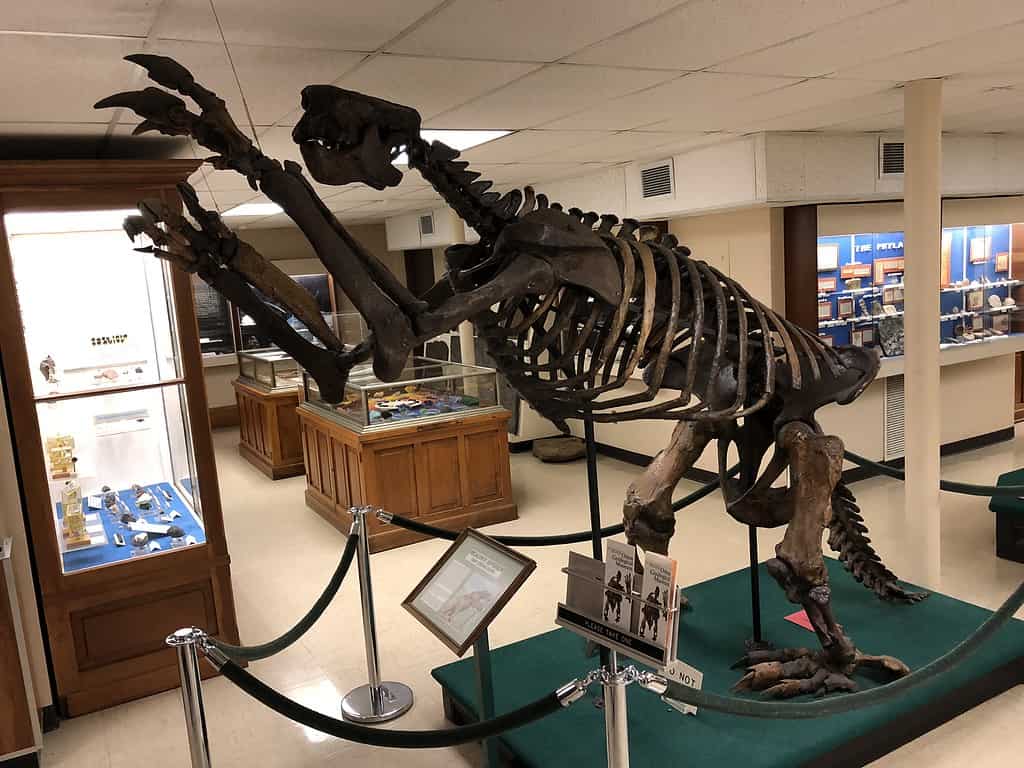
Giant ground sloths are believed to be the ancestors of modern tree sloths.
©Fuzheado / CC BY-SA 3.0 - License
The state of West Virginia named Jefferson’s ground sloth (Megalonyx jeffersonii) its official state fossil in 2008. This species dates to the Late Pleistocene. It was first named based on fossils found in present-day West Virginia then sent to Thomas Jefferson in 1896.
West Virginia: Fossil Coral Lithostrotionella (State Gem)

While agatized coral is utilized as a gemstone, it consists of mineralized fossil coral exoskeletons.
©Astynax / CC0 - License
West Virginia also named the agatized fossil coral Lithostrotionella its official gem in 1990. It dates to the Mississippian and exists in the Hillsdale Limestone of both Greenbrier and Pocahontas counties.
Wisconsin: Calymene celebra (State Fossil)

Like other trilobites on this list,
Calymene celebrawas a marine arthropod.
©Kennethgass / CC BY-SA 4.0 - License
Wisconsin named Calymene celebra its official state fossil in 1985. This trilobite species dates to the Silurian and is a common fossil across the state.
Wyoming: Triceratops (State Dinosaur)

was a quadruped herbivore.
©ALLVISIONN/iStock via Getty Images
The state of Wyoming named Triceratops its official state dinosaur in 1994. It was a chasmosaurine ceratopsian from the Late Cretaceous. Researchers named the type species Triceratopshorridus in 1889 from fossils found in the state’s Lance Formation.
Wyoming: Knightia (State Fossil)

was a freshwater fish found in both North America and Asia.
©Peter Jozefek/Shutterstock.com
Wyoming also named Knightia its official state fossil in 1987. This genus of clupeid bony fish dates to the Eocene and is abundant in the state’s Green River Formation.
Washington, D.C.: “Capitalsaurus” (State Dinosaur)

The original “Capitalsuaurus” fossil is kept in the collections of the Smithsonian Institution in Washington, D.C.
©Gilmore, Charles W / CC0 - License
Finally, the District of Columbia named the “Capitalsaurus” its official state dinosaur in 1998. It was a large theropod from the Early Cretaceous. The name is an informal designation (a “Nomen nudem”) for a tailbone unearthed by construction workers on 1st & F Streets SE on January 28, 1898. It remains the only known specimen of its kind, and unless and until additional fossil material is found, its exact identity will likely remain uncertain. However, this did not stop D.C. from declaring it the official district dinosaur, as well as renaming the site of the discovery Capitalsaurus Court and designating January 28th as Capitalsaurus Day!
The photo featured at the top of this post is © herraez/iStock via Getty Images
Thank you for reading! Have some feedback for us? Contact the AZ Animals editorial team.






